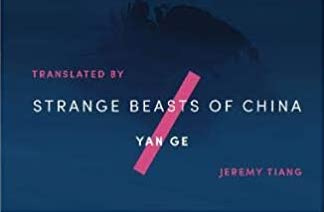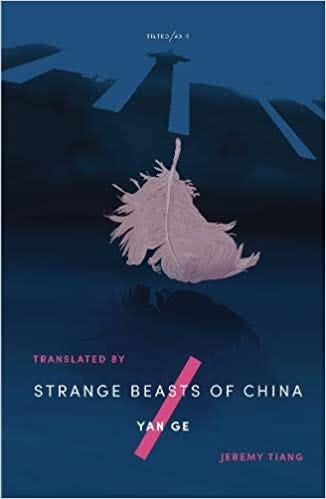Themes: conceptually unique, fantasy, female protagonist, Modern China.
Read this if: You are looking for a unique piece of fiction.
Don’t read this if: You like a straightforward narration
Links to purchase: Tilted Axis, Amazon
During the Victorian era, a new writing format took society by storm: the serial novel. Rather than publishing a novel as a single package, it would arrive as installments in a newspaper or literary journal, sometimes over the span of several years. Some of the world’s most revered works of fiction have been published in this manner: The Count of Monte Cristo, Sherlock Holmes, Crime and Punishment just to name a few. During the 20th century, the format mostly faded from the writing world, only to re-manifest in the advent of the television series. However, every now and then, you still come across a book which first entered life as a periodical. Strange Beasts of China is one such example. Yan Ge’s novel has only recently received its english language translation as a singular work, but it’s publication was originally as installments in a youth literary magazine in 2006 when Yan Ge was a 21 years old University student.
The novel’s origin as a serial is not just a passing piece of trivia, it is fundamental to the way the story is written. Each chapter unfolds as it’s own self-contained tale about a different type of strange beast living in the fictional city of Yong’An. Across these independent stories arches a larger plot centered on the narrator, who herself is a writer of a serial in the local Yong’an newspaper, and her relationship with the mysterious figure of an old university professor. The narrator’s newspaper column often features stories of the city’s beasts, leading them to begin seeking her out, asking that their stories be told.
Yong’an is presented as a small industrial city in Southern China, unremarkable beyond the fact it is the home to the number of beasts mixed in among the human population. As it turns out, the beasts which call the city home, are not particularly beastly. In most regards, they are indistinguishable from the humans they cohabitate the city with, and as the story progresses it becomes clear that the humans are just as beastly as the beasts.
Sorrowful beasts are gentle by nature, and prefer the cold and dark. They love cauliflower and mung beans, vanilla ice cream and tangerine pudding. They fear trains, bitter gourds and satellite TV.
The males of the species are tall, with large mouths and small hands, scales on the insides of their left calves and fins attached to their right ears. The skin around their belly buttons is dark green. Other than that, they’re just like regular people.
The females are beautiful - slender figures with reddish skin, long, narrow eyes, ears a little larger than normal. For three days at the full moon, they lose the ability of human speech and squawk like birds instead. Otherwise, they’re just like regular people.
Sorrowful beasts never smile. If they do, they can’t stop - not until they die. Hence their name.
At its strongest moments, the book reads like a set of parables about the nature of humanity, revealed through their interactions with the beasts; the writing is clear and carries moral weight. However, when it comes to the larger arc featuring the mysterious professor, the writing is intentionally opaque. I felt that the mystery intertwined into the smaller stories, clouded the clarity of the parable structure, blunting each story's impact. Overall though, I thought the book was well worth the read. The beasts were vivid, and imaginative. There’s no doubt the novel is a wonderfully unique piece of fiction, and Yan Ge is a creative force. I look forward to reading more of her works in the coming years.


